Relics of the Sriwijaya Kingdom
Relics of the Sriwijaya Kingdom
This time we will discuss the material about the Sriwijaya Kingdom heritage- Explanation along with pictures briefly and clearly
Candi bahal
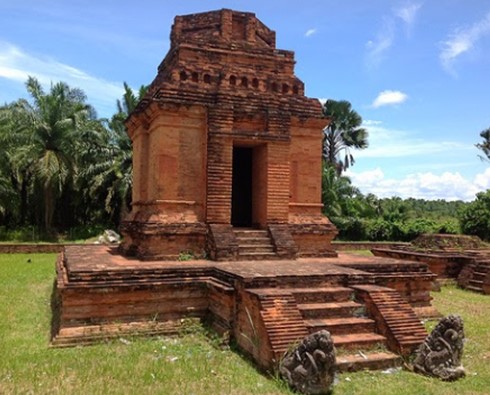
The Bahal Temple is a Buddhist temple complex with the Vajrayana tradition in the village of Bahal,
Padang Bolak Regency, Portibi, Padang Lavas Regency, North Sumatra.
This temple is made of red brick, at the foot of the temple there is a board -shaped decoration around a sculpture of a yaksha dancing with the head of an animal.
The face of the dancer is wearing an animal mask, like ceremonies in Tibet,
and between the boards was an ornament in the form of a sitting lion carved.
This temple is also very suitable for visiting Sumatra because of its amazing beauty. other than that, You can also preserve culture in Indonesia.
Sriwijaya Gate
The Sriwijaya gate is located in the village of Rimba, Central Dempo District, Pagar Alam City, South Sumatra. There is 9 gates at the gates of Sriwijaya, but so far only 7 the gate found.
Stone Lake
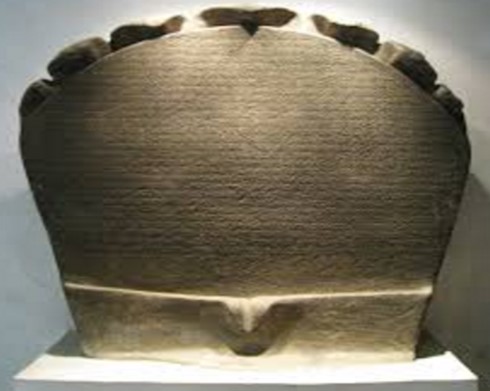
The next legacy from the Srivijaya kingdom is an inscription on a rock lake. The inscription "Telaga Batu” found in the year 1935 in Telaga Biru, in the Ilir region 3, in the Ilir Timur II region, in the city of Palembang, which contains a curse for those who committed crimes in the Srivijaya sea , and currently stored at the Jakarta National Museum.
In the vicinity of the Telaga-Batu inscription was found, Telaga-Batu-2 inscriptions were also found, which tells about the existence of the monastery,
and last year more than 30 Siddhayatra inscriptions were also found, which is also stored at the Jakarta National Museum. The Telaga Batu inscription is carved from high andesite stones 118 cm and width 148 cm.
At the top of the inscription there is 7 jewelry on cobra head, and in the middle there is a shower through which water flows for washing.
The inscriptions on this inscription have 28 line with alphabet letters and use the ancient Malay language.
Then Kasparis expressed the opinion that those who are dangerous and can oppose the unity of Sri Wijaya should be inaugurated, that is, son of King (rajaputra), minister (kumramati), regent (bhupati), general (senapati),
Dignified / leading local leaders (nayaka), nobility (wash), subordinate king (haji prati), hakim (dandanayaka), workers / laborer (tukha character = vuruh),
low head of labor (addhyaksi nidzhavarna), weapons expert (wasikarana), army ( chabhata), manager (wasabhakarakara) lawyer (wasabhakarakara) lawyer (wavsab harakara)
Lawyer (wasabhakarakara) lawyer (wavsabharakda) adhikarana), shop employee (kayastha), craftsman (sthapaka),
captain of the ship (phavaka), traders (traders), butler salesman (Hajj marsi) and slaves (hulun haji).
This inscription is a very cursed inscription, because he also has the name of a government official on it,
And according to some historians, the person who wrote the inscription also lives in Palembang, which is the capital of the kingdom.
Kedukan Bukit Inscription
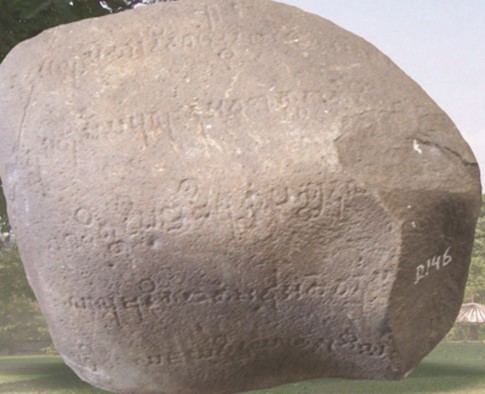
The royal heritage of Sri wijaya Kedukan Bukit Temple opened on 29 November 1920 by M.
Batenburg in Kampung Kedukan Bukit, Kelurahan 35 Illyrian, Palembang, South Sumatra, more precisely on the banks of the Tatang River, which flows into the Musi River.
The size of this inscription was 45 cm x 80 cm uses the ancient Malay language and characters Pallav.
The contents of this inscription tell the story of the royal envoy of Sri Vijay, Dapunt Hyang, who went to Sidhayarta or took a holy boat trip.
During the trip, he managed to conquer several other areas, and the inscription is now also kept in the Jakarta National Museum.
The 8th line of this inscription has a date element, but eventually disappeared, and must be filled with months. According to the inscription fragment No.. D.161, found at a place in Telaga Batu, Zh.G.. de Casparis dan M.
Bochari is filled with the name Assad,
until the inscription is complete, that is, day to 5 Assad's bright crescent,that is 16 June 682 AD.
Talang Tuwo Inscription
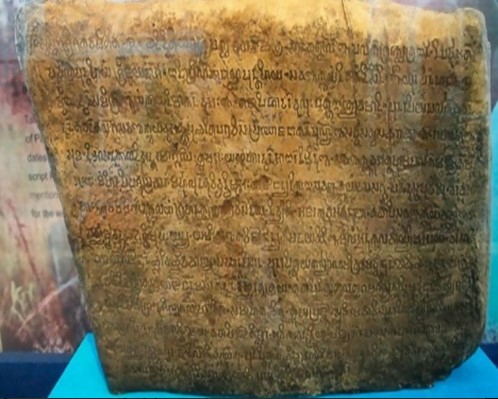
Sri Wijaya Royal Heritage At the foot of Bukit Seguntang on the north bank of the Musi River,
A resident of Palembang, Louis Constant Westenenk, found the inscription on 17 November 1920.
The so -called Talang Tuwo, contains a dedicated prayer telling about the Buddhist tradition used at that time.
Which has 14 line, and the first scholars who succeeded in translating this inscription were Van Ronkel and Bosch,
Then this inscription is stored in the Jakarta National Museum, starting year 1920.
This inscription tells about the development of the garden by king Sriwijaya, namely Sri Jayanas, which was created for people in the 7th century.
The inscription says that the garden is in a place with a very beautiful view, and there are hills and valleys.
In this Talang Tuwo inscription, Your Majesty's intentions are written, that is, what is grown here:
Namely coconut, pinang, gula aren, sago and various trees, You can eat fruit, as well as bamboo haur, valuh, pattum, dll.
And let also other crops with dams and ponds and all the donations I give, can be used for the benefit of all beings that can move,
And those who don't, and for them to be the best way to get happiness .
“If they are hungry when they are resting or traveling, let them find food and drinking water. I hope all the gardens they open will be overkill (harvest). Let all the cattle they breed breed and their slaves grow.”
Leiden
It is also a historical relic of the Sri Vijaya Kingdom written on copper plates in Sanskrit and Tamil, and the Leiden inscription currently in a Dutch museum,
which contains information about the good relations of the Chol dynasty of Tamil with the Silendra dynasty in Sri Vijaya, South India.
Lust
Discovered by L.M controllers. Berkhout in the year 1904 on the outskirts of Batang Merangin, Batu Bersurat village, Karang Berakhi village, Karang Berakhi village, Pamenang district, Merangin, Jambi.
As in the Telaga Batu inscription, the Chalk inscription and the Pasemah Palace inscription explain the curse for those who commit evil and are disloyal to King Shriwijai.
Pak Nazir expressed his opinion if the writing “Healing coral” found in a place adjacent to an ancient brick building as a burial site.
From the story of "Dusun Bamu Bersurat", The Karangberahi inscription was found by the grandson of Temenggung Leikka in 1921 1727, named Dusun Tanjung Agung.
City of Lime
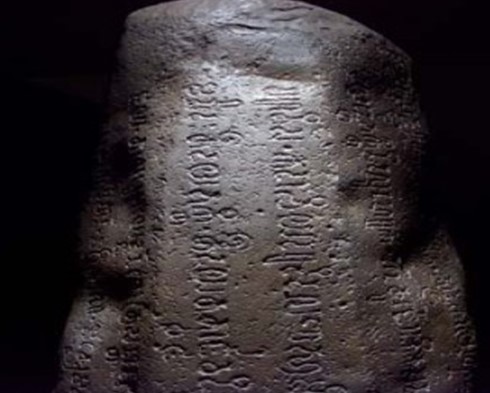
Which is a relic of the Sriwijaya kingdom, found in the western part of the island of Bangka and written in ancient Malay and Pallavic script. This inscription was discovered by J.K.
This inscription was later examined by H.. Kern, a Dutch epigraphist who worked at the Bataviaasch Genootschap in Batavia. Initially, he thought that Sri Vijaya was the name of the king.
Then George Cowdes found that Shriwijaya was the name of the Kingdom of Sumatra in the 7th century AD
To 2012, chalk inscriptions are still housed in the State Museum of Rijksmuseum, which is the Royal Museum of Amsterdam, Netherlands,
The Kota Kapoor inscription was found before the Kedukan Bukit inscription and the Talang Tuvo inscription.
From this inscription it is known that Sriwijaya controlled parts of Sumatra, Lampung, Bangka, and also Belitung.
Ligor
Found in Nakhon Si Thammarat, Southern Thailand, where the statues are located on either side. On the first side is the inscription "Ligor A inscription” or "Viang Sa", and on the other side is the inscription "Ligor B", which was most likely made by the king of the Silendra dynasty and explains the problem of conferring the title of Vishnu Sesavarimadavimathan on Sri Maharaj.
Tells about the King of Sriwijaya, who was the king of all the kings in the world who founded Trisamaya Chaitaya for Kajara.
Palas Pasemah Inscription
The inscription “Istana Pasemah” found on the edge of a swamp in the village of Istana Pasemah, South Lampung, Lampung, written using old Malay
The contents of this inscription explain the curse of people who do not want to submit to Sri Vijay's power. It is unbelievable that if you look at the script, the Pasemah Palace inscription dates from the 7th century AD.
End of the Sky Inscription
The Hujung Langit inscription is an inscription from the Kingdom of Sri Wijaya, which was found in a village called Haur Kuning Village, Lampung
The contents of this inscription are not very clear, because the damage done is quite a lot, but is thought to appear in the year 997 M
Muara Takus Temple
The next legacy from the kingdom of Sri Wijaya is the Muara Takus Temple. Muara Takus Temple is located in the village of Muara Takus,
This temple has existed since the golden age of the Sri Vijaya Kingdom and has become one of the centers of government government.
Muaro Jambi Temple
The Muaro Jambi Temple Complex is the largest temple in Southeast Asia, which is an area 3981 hectares Muaro Jambi Temple is located in Maro Sebo District, Muaro Jambi Regency
This temple complex was first reported in 1999 1824 by a British lieutenant named S.C. Crooke when doing watershed mapping for military purposes. Later in the year 1975, the Indonesian government carried out a serious restoration led by R. Soekmono.
Javanese script juno
From the Juno Javanese script found from several plates, an epigraphist named Boechari found this temple. 9 The temple has just undergone a restoration process, namely Gedong Satu, Stone Twins, Kotomahligai, Gedong Dua, High, Gumpung, Candi Astano, Flower Stone, Telago Rajo and also Kedaton.
Thereby, a complete review that we can give about the legacy of the Srivijaya kingdom. Many other historical items from the Sri Wijaya kingdom were found, like jewelry, ceremonial equipment, military equipment and so on. I hope you can expand your knowledge of the history of the kingdom in Indonesia.
Other Articles :
- 10 relics of the Majapahit government
- the story of the prophet Adam
- Qalqalah sugra and its explanation
The post Peninggalan Kerajaan Sriwijaya appeared first on this page.